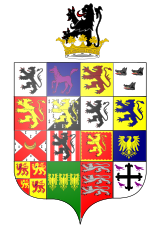



The Royal House of Mathrafal began as a cadet branch of the Welsh Royal House of Dinefwr, taking their name from Mathrafal Castle.[1][2] They effectively replaced the House of Gwertherion, who had been ruling the Kingdom of Powys since late Roman Britain, through the politically advantageous marriage of an ancestor, Merfyn the Oppressor.[3] King Bleddyn ap Cynfyn would join the resistance of the Anglo-Saxon King Harold Godwinson, against the invasion of William the Conqueror, following the Norman Conquest of England. Thereafter, they would struggle with the Plantagenets and the remaining Welsh Royal houses for the control of Wales. Although their fortunes rose and fell over the generations, they are primarily remembered as Kings of Powys and last native Prince of Wales.[4][5]
- ^ Ulwencreutz, Lars (2013). The Royal Families in Europe V : A Brief History of the Ruling Houses During The Last 2000 years, From the House of La Tour d'Auvergne to the House of Zähringen, p. 50
- ^ The Houses of Cunedda and Rhodri Mawr, Welsh Medieval Law: The Laws of Howell the Good (1909) by Hywel ap Cadell, translated by Arthur Wade Wade-Evans.
- ^ Lloyd, John Edward (1911), A History of Wales from the Earliest Times to the Edwardian Conquest, vol. I (2nd ed.), London: Longmans, Green, and Co (published 1912), p. 323-325
- ^ "RCAHMW: In the steps of Owain Glyndwr". rcahmw.gov.uk. Royal Commission on the ancient and historical monuments of wales. Retrieved 2022-10-31.
- ^ Shakespeare's Princes of Wales, England's Hope? Shadowed Heirs in Shakespeare's Histories, Oxford Academic, Marisa R. Cull, 2014, p.52–82
